The construction industry is undergoing a significant transformation, driven by the need for greater efficiency, sustainability, and affordability. New home construction techniques are being developed to meet these demands, revolutionizing the way buildings are designed and constructed.
Techniques such as Precast Flat Panel Systems and modular construction are gaining popularity, offering faster project completion and reduced costs. These modern approaches are changing the face of the industry.
Key Takeaways
- Innovative construction techniques improve efficiency and sustainability.
- New methods reduce project duration and costs.
- Modular construction and prefabrication are gaining popularity.
- Sustainable materials lead to long-term savings.
- Energy-efficient designs reduce operational costs.
Overview of Modern Construction Methods
With the advent of new technologies, modern construction techniques are being increasingly adopted, offering numerous benefits over traditional methods. Modern methods of construction focus on off-site construction techniques, such as mass production and factory assembly, as alternatives to traditional building.
Benefits of Innovative Techniques
Modern construction techniques offer several advantages, including increased speed and improved quality. By leveraging mass production and factory assembly, construction projects can be completed more efficiently, reducing the overall project duration.
- Enhanced precision and accuracy
- Reduced labor costs
- Improved safety standards
- Sustainability through reduced waste
These benefits are driving the adoption of modern construction methods across the industry. As the demand for faster, safer, and more sustainable construction grows, innovative techniques are becoming increasingly important.
Challenges in Implementation
Despite the benefits, modern construction techniques also present several challenges. Regulatory hurdles and skill shortages are among the significant barriers to adoption.
- Regulatory frameworks often favor traditional construction methods
- Skilled labor shortages hinder the effective implementation of new techniques
- High initial investment costs for new technologies and equipment
Addressing these challenges is crucial for the widespread adoption of modern construction methods. Industry stakeholders must work together to develop supportive regulations, training programs, and financing options.
Traditional vs. Modern Construction Methods
As the construction landscape evolves, understanding the differences between traditional and modern methods is crucial. The industry is at a crossroads, with traditional stick-built construction remaining the most common method, while modern techniques like modular construction and 3D printing are gaining traction.
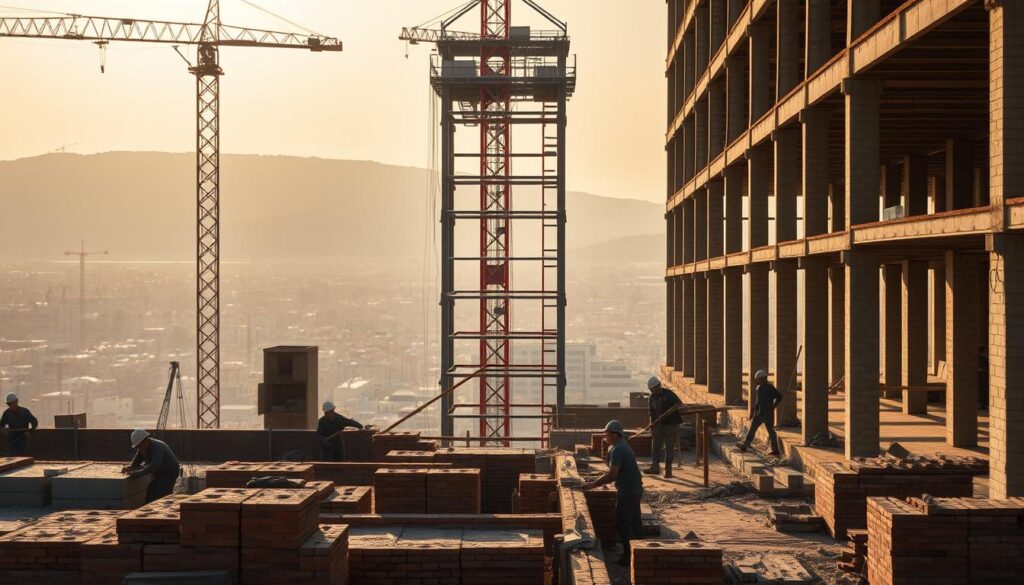
Key Differences Explained
Traditional construction methods involve building on-site from the ground up, using conventional materials and techniques. This approach has been used for centuries and is well understood by most builders. However, it can be time-consuming and labor-intensive.
Modern construction techniques, on the other hand, often involve prefabrication, modular construction, or innovative materials like advanced concrete technologies. These methods can significantly reduce construction time and improve quality control. For instance, modular construction involves assembling building components in a factory before transporting them to the site for final assembly.
Key differences between traditional and modern construction methods include:
| Characteristics | Traditional Construction | Modern Construction |
|---|---|---|
| Construction Time | Longer due to on-site construction | Faster due to prefabrication and modular construction |
| Labor Intensity | High labor intensity on-site | Reduced labor intensity due to factory-based construction |
| Quality Control | Variable quality due to weather and on-site conditions | Improved quality control in factory settings |
When to Use Each Method
The choice between traditional and modern construction methods depends on several factors, including project size, budget, and timeline. Traditional methods may be more suitable for projects with complex designs or those located in areas with limited access to modern manufacturing facilities.
For those interested in learning more about structural engineering for modern construction methods, various online courses are available that cover the latest techniques and technologies.
Modern construction techniques are ideal for projects that require rapid completion, high precision, and sustainability. They are particularly beneficial for large-scale projects or those in areas with harsh weather conditions.
In conclusion, understanding the strengths and weaknesses of both traditional and modern construction methods is essential for making informed decisions in the construction industry.
Modular Construction: A Growing Trend
As the demand for efficient and sustainable construction methods grows, modular construction is emerging as a leading trend. Modular construction involves prefabricated sections manufactured off-site and assembled on-site, offering precise quality control and faster build times.
Benefits of Modular Building
Modular construction offers several benefits, including reduced construction time and waste. By manufacturing modules in a controlled environment, the risk of weather-related delays is minimized, and the construction process becomes more predictable. Additionally, modular construction allows for efficient building practices that reduce material waste and improve overall quality.
For more information on sustainable building materials that can be used in modular construction, visit sustainable building materials.
Challenges Faced by Modular Projects
Despite its benefits, modular construction faces several challenges. Design limitations and transportation costs are significant concerns. The need for modules to be transportable can restrict design flexibility, and the cost of transporting large modules can be substantial.
| Challenge | Description | Potential Solution |
|---|---|---|
| Design Limitations | Restrictions on size and shape due to transportation constraints | Collaborative design approaches that consider transportability |
| Transportation Costs | High costs associated with moving large modules | Strategic planning of module sizes and transportation routes |
| Site Preparation | Need for a prepared site to assemble modules | Advance site preparation to coincide with module production |
Popular Modular Designs
Modular construction is versatile and can be used for a variety of projects, from residential homes to commercial buildings and even modular schools. Popular designs include stackable modules for multi-story buildings and pod-like modules for bathrooms and kitchens.
The use of modular construction is expected to continue growing as the industry seeks more innovative construction methods. By understanding the benefits and challenges of modular construction, builders and developers can make informed decisions about its application in their projects.
Green Building Methods for Sustainability
Green building methods are revolutionizing the construction industry by focusing on sustainability and energy efficiency. As concern for the environment continues to grow, the adoption of green building practices has become increasingly important.
Energy-Efficient Strategies
One of the key aspects of green building is the implementation of energy-efficient strategies. This includes the use of advanced insulation materials, energy-efficient windows, and smart building technologies that optimize energy consumption. For instance, buildings can be designed to maximize natural light, reducing the need for artificial lighting.
According to the U.S. Green Building Council, buildings that incorporate energy-efficient design can reduce energy consumption by up to 30%. This not only benefits the environment but also results in significant cost savings for building owners and occupants.
Use of Recycled Materials
Another crucial element of green building is the use of recycled materials. This involves incorporating materials that have been reused or recycled from previous construction projects or other sources. Examples include reclaimed wood, recycled glass, and recycled metal.
The use of recycled materials not only reduces waste but also decreases the demand for new raw materials, thereby conserving natural resources. For more information on green building techniques, you can visit https://www.foxblocks.com/blog/green-building-techniques.
| Material | Recycled Content | Environmental Benefit |
|---|---|---|
| Reclaimed Wood | 100% | Reduces deforestation |
| Recycled Glass | 50-100% | Conserves raw materials |
| Recycled Metal | 50-100% | Reduces mining and processing |
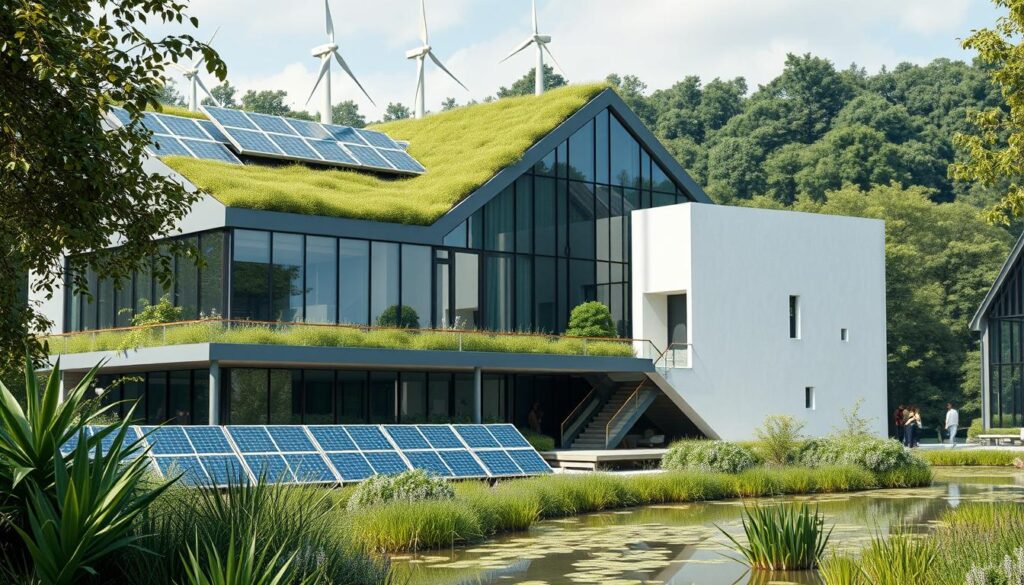
By adopting green building methods, the construction industry can significantly reduce its environmental footprint. As the industry continues to evolve, it is likely that we will see even more innovative approaches to sustainable construction.
3D Printing in Construction
3D printing is transforming the way we build homes and structures, offering a faster and more efficient alternative to traditional methods. This innovative technology is revolutionizing the construction industry by enabling the creation of complex designs with reduced waste and lower labor costs.
How 3D Printing Works
The process of 3D printing in construction involves layering materials such as concrete or specialized cement mixtures to create the desired structure. This is achieved through large-scale 3D printers that are controlled by sophisticated software, allowing for precise and intricate designs. The technology has advanced to the point where entire homes can be printed in a matter of days, a significant reduction from traditional construction timelines.
For more information on how 3D printing is used in construction, you can visit this resource to learn about its applications and benefits.
Advantages of 3D-Printed Structures
The advantages of using 3D printing in construction are numerous. One of the most significant benefits is the reduction in construction time. Traditional building methods can take months or even years to complete, whereas 3D printing can achieve the same results in a fraction of the time. Additionally, 3D printing minimizes waste by using exact amounts of material, making it a more sustainable option.
- Rapid construction timelines
- Reduced material waste
- Increased design flexibility
- Lower labor costs
As the technology continues to evolve, we can expect to see even more innovative applications of 3D printing in the construction industry, potentially addressing some of the world’s most pressing housing shortages.
Prefabrication and Its Advantages
Prefabrication, a method involving the manufacture of building components off-site, is gaining popularity in modern construction. This technique involves assembling building elements in a factory or workshop and then transporting them to the construction site for final assembly.
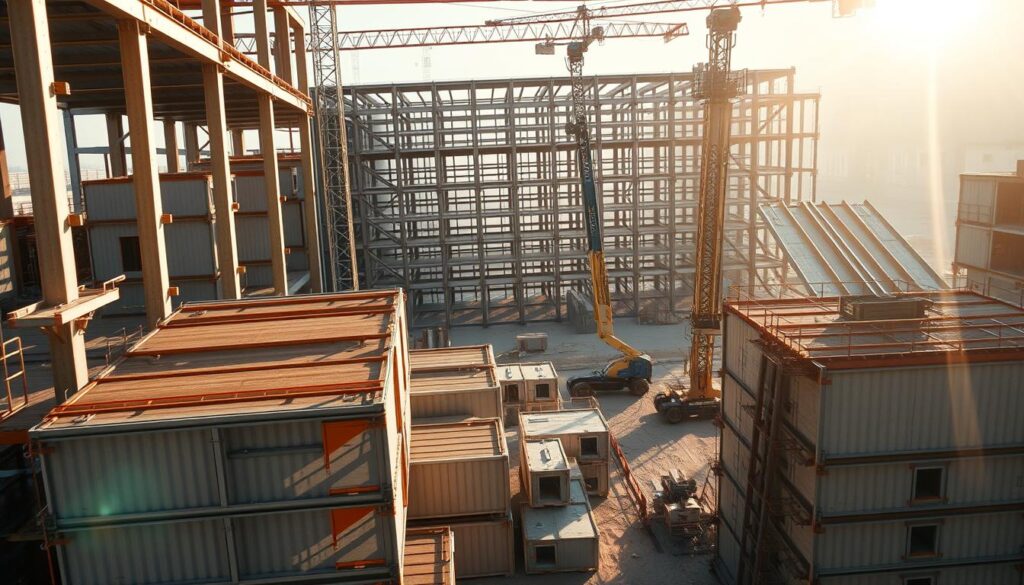
One of the significant benefits of prefabrication is its cost-effectiveness. By manufacturing components off-site, construction projects can reduce waste, improve quality control, and minimize the impact of weather conditions on the construction timeline.
Cost-Effectiveness of Prefab Construction
The cost-effectiveness of prefabrication is largely due to the efficiencies gained in the manufacturing process. Economies of scale are achieved through the production of multiple components in a controlled environment, reducing labor costs and material waste.
Additionally, prefabrication allows for better quality control, as components are manufactured in a controlled environment. This reduces the likelihood of defects and ensures that components meet precise specifications.
Common Applications of Prefabrication
Prefabrication is being increasingly used in various construction projects, including residential homes, commercial buildings, and infrastructure projects. Its applications range from simple modular homes to complex architectural designs.
Some of the common applications of prefabrication include:
- Modular construction for residential and commercial buildings
- Prefabricated bridge components for infrastructure projects
- Pre-engineered building systems for industrial facilities
By adopting prefabrication, construction projects can benefit from reduced construction time, improved quality, and enhanced sustainability.
The Role of Technology in Construction
The construction industry is on the cusp of a technological revolution, with innovations transforming traditional practices. Technology is not just a tool; it’s a catalyst for change, enhancing every aspect of construction from planning to execution.
Innovative construction methods are being adopted at a rapid pace, with technology playing a pivotal role. Among these, drones and virtual reality are making significant impacts.
The Impact of Drones
Drones are revolutionizing site surveys, monitoring, and inspections. They provide real-time data, enhancing project management and reducing risks. With the ability to capture high-resolution images and videos, drones offer a detailed overview of construction sites, facilitating more accurate planning and execution.
The use of drones in construction also improves safety by reducing the need for personnel to access hazardous areas. Moreover, drones can quickly survey large areas, making them ideal for monitoring progress and detecting potential issues early.
Virtual Reality in Project Planning
Virtual reality (VR) is transforming project planning by allowing stakeholders to visualize projects in a fully immersive environment. This technology enables architects, engineers, and clients to explore designs in detail, identify potential issues, and make informed decisions.
VR enhances collaboration by providing a common platform for all stakeholders to understand the project’s scope and timeline. It also aids in training personnel by simulating real-world conditions, thereby improving preparedness and reducing on-site risks.
The integration of modern construction techniques like VR and drones signifies a shift towards more efficient, accurate, and safe construction practices. As technology continues to evolve, its role in shaping the future of construction will only become more pronounced.
Lean Construction Principles
Lean construction principles aim to streamline construction processes, making them more efficient and cost-effective. By embracing lean construction, companies can significantly improve their construction efficiency and reduce unnecessary costs.
The core of lean construction lies in its ability to eliminate waste and optimize construction workflows. This approach not only enhances productivity but also improves the overall quality of the construction project.
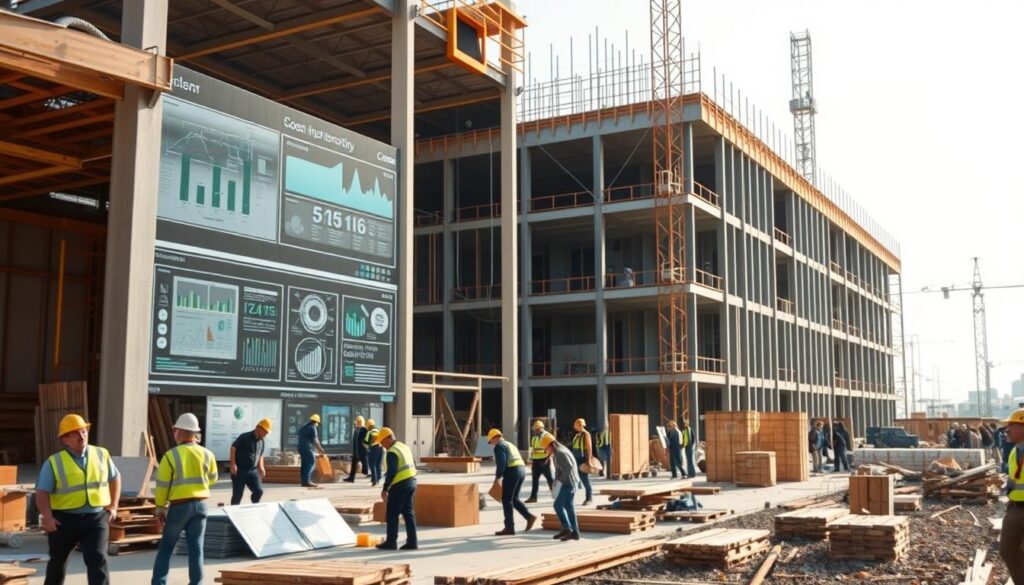
Benefits of Lean Practices
Implementing lean practices in construction offers numerous benefits, including:
- Reduced Waste: Minimizing waste is a fundamental aspect of lean construction, leading to cost savings and reduced environmental impact.
- Improved Efficiency: Streamlining processes and eliminating unnecessary steps enhance overall project efficiency.
- Enhanced Quality: By focusing on value-added activities, lean construction improves the quality of the final product.
- Better Project Outcomes: Lean construction practices lead to more predictable and reliable project outcomes.
Techniques for Implementation
To successfully implement lean construction principles, several techniques can be employed:
- Value Stream Mapping: This involves analyzing and visualizing the construction process to identify areas of waste and opportunities for improvement.
- Last Planner System: A collaborative planning approach that involves all stakeholders in the planning process, ensuring that everyone is aligned and working towards the same goals.
- Continuous Improvement: Encouraging a culture of continuous improvement, where employees are empowered to identify and solve problems.
By adopting these techniques and focusing on lean construction principles, the construction industry can continue to evolve and improve, delivering better projects and enhancing client satisfaction.
Building Information Modeling (BIM)
BIM, or Building Information Modeling, is a game-changer in modern construction, enhancing collaboration and reducing errors. It’s a digital representation of the physical and functional characteristics of a building.
Introduction to BIM
Building Information Modeling (BIM) is not just a software; it’s a process that involves creating and managing digital representations of physical and functional characteristics of places. BIM is used for various purposes, including project planning, design, construction, and operation.
By adopting BIM, construction projects can benefit from improved collaboration among stakeholders. This digital approach ensures that all parties involved in the project have access to the same information, reducing misunderstandings and errors.
Advantages of Using BIM
The advantages of using BIM are multifaceted. Firstly, it enhances collaboration among architects, engineers, contractors, and clients by providing a shared platform for project information.
- Improved project visualization
- Reduced construction costs
- Enhanced collaboration
- Better project outcomes
Moreover, BIM helps in reducing errors and improving project timelines. By having a detailed digital model, potential issues can be identified and addressed early in the project lifecycle.
In conclusion, BIM is transforming the construction industry by providing a more efficient, collaborative, and less error-prone approach to building projects.
Traditional Block and Frame Construction
Block and frame construction, a method rooted in tradition, continues to evolve and adapt to modern building needs. This construction technique combines the durability of block construction with the flexibility of frame construction, offering a versatile solution for various building projects.
Traditional block construction involves building walls using concrete blocks or bricks. This method is valued for its strength and ability to provide good insulation. “The use of block construction can significantly reduce the need for additional structural elements,” says an industry expert. The process involves laying blocks in a pattern, usually with mortar, to create a solid wall that can support heavy loads.
Overview of Block Construction
Block construction is renowned for its durability and resistance to natural elements. It is often used in foundations, walls, and other structural elements that require high strength. The technique involves:
- Preparing the foundation
- Laying the first course of blocks
- Continuing to build the wall, ensuring proper alignment and mortar distribution
The result is a robust structure that can withstand various environmental conditions. Block construction is particularly beneficial in areas prone to extreme weather, as it provides a strong barrier against the elements.
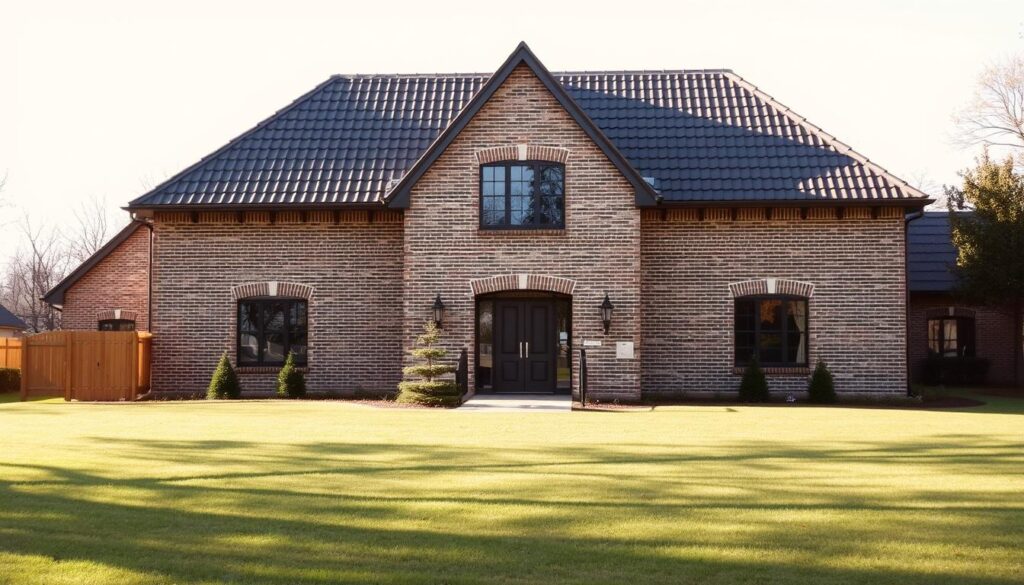
Frame Construction Techniques
Frame construction, on the other hand, involves creating a structural frame that supports the building. This frame is typically made from wood or steel and is designed to bear the weight of the building, including walls, floors, and roofs.
Frame construction offers several advantages, including flexibility in design and the ability to construct buildings quickly. The use of prefabricated frames can significantly reduce construction time, making it an attractive option for projects with tight deadlines.
The process of frame construction involves:
- Designing the frame according to the building plans
- Assembling the frame on-site or using prefabricated components
- Ensuring the frame is level and securely anchored to the foundation
By combining block and frame construction techniques, builders can create structures that are both durable and adaptable to various design requirements. As noted by construction professionals, “The combination of traditional block and frame construction methods offers a balanced approach to building, leveraging the strengths of both techniques.”
Emerging Trends in Construction Materials
Emerging trends in construction materials are transforming the way buildings are designed and constructed. The industry is shifting towards more sustainable and innovative materials that not only enhance the durability of structures but also reduce environmental impact.
The development of advanced concrete technologies is a significant trend. These technologies include self-healing concrete, ultra-high performance concrete, and fiber-reinforced concrete, which offer improved strength, durability, and sustainability.
Advanced Concrete Technologies
Advanced concrete technologies are revolutionizing traditional construction methods. For instance, self-healing concrete can repair cracks autonomously, reducing maintenance costs and extending the lifespan of structures.
To illustrate the benefits of advanced concrete technologies, consider the following comparison:
| Technology | Benefits | Applications |
|---|---|---|
| Self-Healing Concrete | Autonomous repair, reduced maintenance | Bridges, Highways |
| Ultra-High Performance Concrete | Enhanced strength, durability | High-Rise Buildings, Infrastructure |
| Fiber-Reinforced Concrete | Improved tensile strength, crack resistance | Industrial Floors, Tunnel Linings |
For more information on the latest technologies in construction, visit World Civil Society to explore innovative methods in bridge construction.
Smart Materials
Another emerging trend is the use of smart materials that can adapt to changing conditions. These materials include thermochromic, photochromic, and shape-memory alloys, which can enhance the functionality and efficiency of buildings.
Smart materials are being integrated into various construction projects to improve energy efficiency, enhance user experience, and provide adaptive responses to environmental changes.
The integration of these emerging trends in construction materials is set to revolutionize the industry, enabling the creation of more sustainable, efficient, and resilient structures.
Safety Protocols in Modern Construction
Safety protocols in modern construction are crucial for preventing workplace injuries. The industry has seen significant advancements in safety measures, driven by technological innovations and a growing emphasis on worker safety.
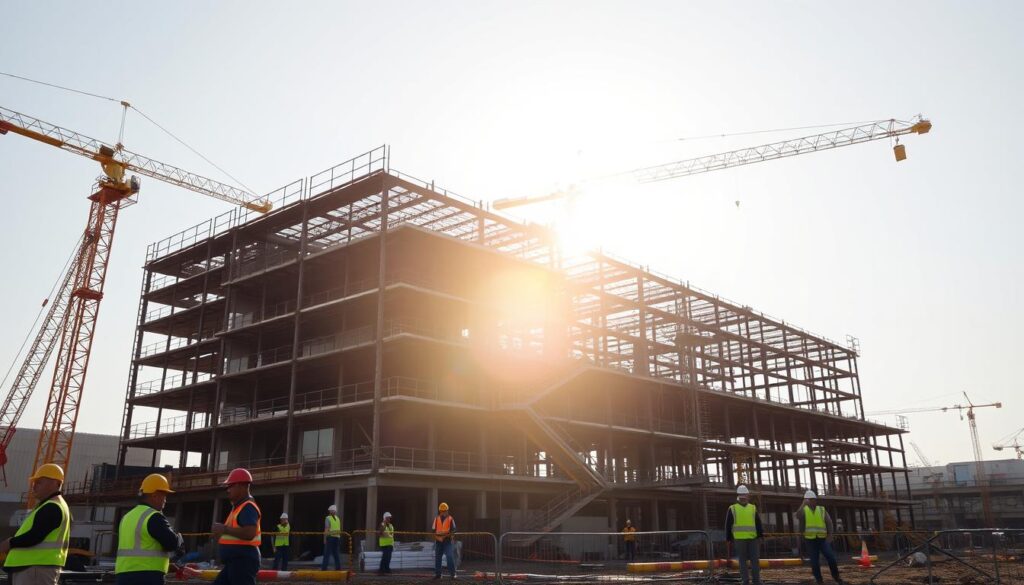
Effective safety protocols are multifaceted, involving both training and technology. One of the critical aspects is safety training, which equips workers with the knowledge to identify and mitigate potential hazards.
Importance of Safety Training
Safety training is essential for all construction workers, regardless of their experience level. It covers a wide range of topics, from basic safety procedures to the safe operation of complex machinery. Regular training sessions help to reinforce safe practices and update workers on new technologies and protocols.
Moreover, safety training is not a one-time event but an ongoing process. It involves continuous education and reinforcement, ensuring that safety remains a top priority on construction sites.
Innovative Safety Technologies
Innovative safety technologies are transforming the construction industry. Technologies such as wearable safety devices, drones, and AI-powered monitoring systems are being used to enhance site safety. For instance, wearable devices can monitor a worker’s vital signs and alert supervisors to potential health risks.
Drones are used for site surveillance, inspecting areas that are difficult or dangerous for humans to access. They can identify potential hazards, such as structural damage or unsafe conditions, allowing for prompt intervention.
The integration of these technologies into safety protocols represents a significant step forward in construction safety. By leveraging innovative construction methods and technologies, the industry can continue to improve safety standards and reduce accidents.
The Future of Construction: Predictions
The future of construction is expected to be shaped by emerging trends that prioritize efficiency, sustainability, and technological advancements. As the industry continues to evolve, it’s crucial to understand the factors that will drive this change.
Trends to Watch in the Next Decade
Several trends are poised to revolutionize the construction industry in the next decade. These include:
- Modular construction, which offers faster project completion and reduced waste.
- 3D printing, enabling the creation of complex structures with precision.
- Sustainable building practices, focusing on energy efficiency and environmentally friendly materials.
According to a report by Buildern, the adoption of these trends is expected to increase significantly, driven by the need for more efficient and sustainable construction methods.
The Influence of Urbanization
Urbanization is another key factor that will shape the future of construction. As cities continue to grow, there will be an increased demand for housing, infrastructure, and public services.
“The world’s urban population is projected to increase by 2.5 billion by 2050, with 68% of the global population living in urban areas.”
This trend will drive the need for innovative construction solutions that can meet the demands of urbanization while minimizing environmental impact.
| Trend | Impact | Benefits |
|---|---|---|
| Modular Construction | Faster project completion | Reduced construction time, lower costs |
| 3D Printing | Complex structures with precision | Increased accuracy, reduced waste |
| Sustainable Practices | Energy efficiency and eco-friendly materials | Reduced environmental impact, lower energy costs |
For more insights into the companies leading these trends, visit World Civil Society to explore notable civil engineering companies.
Case Studies of Successful Construction Projects
The effectiveness of modern construction methods is best illustrated through case studies of successful projects. These projects not only showcase the potential of innovative techniques but also provide valuable insights into their implementation.
Notable Projects Using Modern Methods
Several construction projects have successfully harnessed modern construction techniques to achieve remarkable results. For instance, modular construction has been used in various projects, offering benefits such as reduced construction time and improved quality control.
- Modular Construction: Projects like the Amazon HQ2 in Virginia have utilized modular building techniques, enabling faster completion and minimizing on-site labor.
- 3D Printing: The use of 3D printing in construction has been exemplified in projects like the WinSun houses in China, where entire buildings were printed, reducing material waste and construction time.
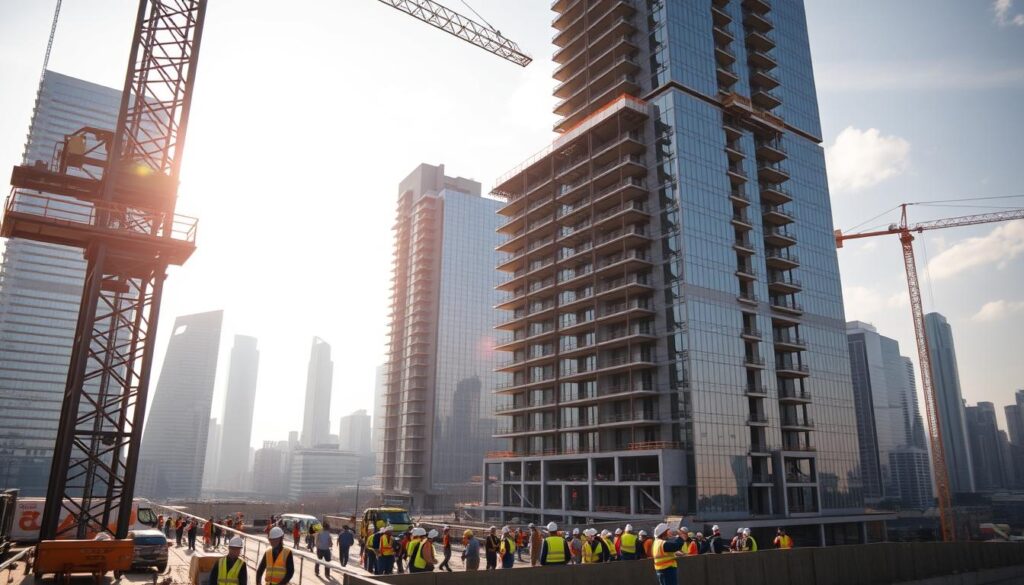
Lessons Learned from Challenges
While modern construction techniques offer numerous benefits, their implementation is not without challenges. Projects often face issues related to regulatory compliance, supply chain disruptions, and the need for specialized labor.
For example, the adoption of 3D printing technology requires significant investment in equipment and training. However, the long-term benefits, such as reduced labor costs and improved precision, can outweigh these initial challenges.
- Regulatory Compliance: Ensuring that modern construction methods comply with existing building codes and regulations is crucial. Projects must navigate these complexities to avoid delays.
- Supply Chain Resilience: The reliance on specialized materials and equipment for modern construction techniques can make projects vulnerable to supply chain disruptions.
By examining these case studies and the challenges faced, the construction industry can continue to evolve and improve, leveraging the strengths of modern construction methods while mitigating their weaknesses.
Regulations Impacting Construction Methods
The regulatory frameworks governing building codes and environmental regulations have a profound effect on the construction industry. As the industry continues to evolve, understanding these regulations is crucial for compliance and innovation.
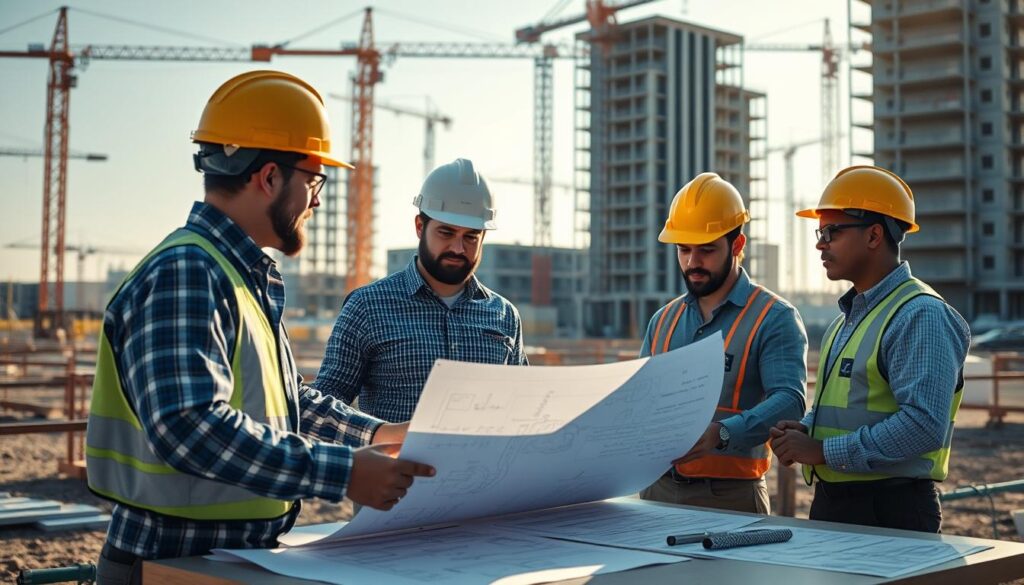
Understanding Building Codes
Building codes are sets of rules that govern the design, construction, and occupancy of buildings. These codes are designed to ensure public safety, health, and welfare. Compliance with building codes is not only mandatory but also critical for avoiding costly rework and potential legal issues. The codes cover various aspects, including structural integrity, fire safety, and accessibility.
Environmental Regulations
Environmental regulations in construction are aimed at minimizing the industry’s ecological footprint. These regulations cover areas such as waste management, energy efficiency, and the use of sustainable materials. Implementing green building practices not only helps in complying with these regulations but also enhances the marketability of the projects. Moreover, adherence to environmental regulations can lead to cost savings through reduced energy consumption and waste reduction.
To navigate these regulations effectively, construction professionals must stay informed about the latest changes in building codes and environmental laws. This involves continuous education and training, as well as collaboration with regulatory bodies.
Conclusion: The Evolution of Construction Methods
The construction industry is rapidly evolving, driven by the need for innovative and sustainable practices. As we’ve explored throughout this article, various construction methods are transforming the way buildings are designed and constructed.
Industry Trends Shaping the Future
The shift towards sustainable construction methods is gaining momentum, with a focus on reducing environmental impact. Innovative construction methods, such as 3D printing and modular construction, are also becoming increasingly popular due to their potential to improve efficiency and reduce costs.
Adopting New Techniques for a Better Tomorrow
Embracing new construction methods is crucial for the industry’s future. By adopting innovative and sustainable practices, builders can create structures that are not only environmentally friendly but also cost-effective and efficient. As the industry continues to evolve, it’s essential to stay informed about the latest trends and technologies.
